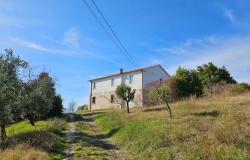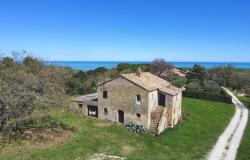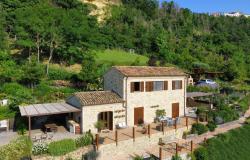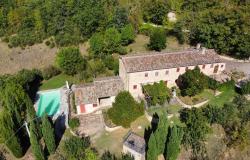In reply to A newbie all over again! by Annec
I'm also thinking of using
Submitted by La Dolcevita on Thu, 09/02/2010 - 17:32In reply to A newbie all over again! by Annec
I'm also thinking of using geothermal/alternative energy - we're building a new house and are at the early stage of putting the plans together - so if anyone has had any installed I'd love to hear your experiences of how effective it is in terms of heating the home/costs of installation/savings re running costs etc etc and if anyone can recommend a company they have worked with that would be fantastic Many thanks
Geothermal
Submitted by Badger on Fri, 09/03/2010 - 02:28In reply to A newbie all over again! by Annec
Here are a couple of links to posts that I put on the old forum on the subject. If you need any specific information, then you can PM me.
www.italymagazine.com/forums/building-renovation/8015-geothermal-hea...
www.italymagazine.com/forums/building-renovation/8919-logical-illogi...
HI Badger - thank you so much
Submitted by La Dolcevita on Sat, 09/04/2010 - 04:15In reply to Geothermal by Badger
HI Badger - thank you so much - really useful. I'm completely non technical so it's probably going to take a few reads to get my head round it - I love the fact that you can use the underfloor "heating" to cool the house in the summer - a bonus I was unaware of - I'm going to print the lot off later - thanks again
Geothermal
Submitted by Natasha and Tony on Sat, 11/20/2010 - 06:24In reply to A newbie all over again! by Annec
Hi, I am also about to undertake a restoration project and have planned to use underfloor heating, which I have already bought, but would be really interested in more info on geothermal technology,equipment and hearing from anyone who can recomend a good (reasonably priced!)installation company. Thanks
Geothermal
Submitted by Badger on Sat, 11/20/2010 - 10:59In reply to A newbie all over again! by Annec
Hi N & T.
Have sent you a email. Below is a link to the site, where you can get more info.
Full house running cost with Geothermal heating and DHW
Submitted by Badger on Mon, 11/22/2010 - 14:16In reply to A newbie all over again! by Annec
Just to update an earlier thread, these are the current costs of total electricity usage here, inclusive of the geothermal system, from 2007 to last bill this month. Electricity Costings 2007 2008 2009 2010 KW Cost KW Cost KW Cost KW Cost Jan/Feb 2522 556.52 2803 644.17 2849 862.96 *a2763 798.38 Mar/Apr 1793 408.69 1862 449.28 1742 502.58 *b1708 497.20 May/Jun 884 227.88 954 255.82 892 227.06 *c1426 310.02 Jul/Aug 835 219.88 879 245.52 793 187.12 *d1026 138.36 Sep/Oct 1345 324.81 1575 404.56 1306 352.68 *e1393 302.07 Nov/Dec 2194 702.66 1917 541.43 2304 622.42 Totals 10573 2440.44 9990 2540.78 9886 2754.82 Already deducted from above costs, due to Enel overestimating usage: a) overcharge from previous bill E48.31 b) “ “ “ “ E57.03 c) “ “ “ “ E65.77 d) “ “ “ “ E124.55 e) “ “ “ “ E68.44
Latest update from Enea on tax deductions
Submitted by Badger on Wed, 11/24/2010 - 12:25In reply to A newbie all over again! by Annec
This is the latest information that I can find on this. If it gets passed by parliament then another bonus for anyone paying Italian income tax.
The tax deduction of 55% have not yet been renewed by the Government. La proroga sino al 31/12/2011 con detrazione spalmata su 10 anni, inserita nella legge di stabilità 2011, è stata per ora approvata solo dalla Camera e quindi NON è ancora vigente. The extension up to 31/12/2011 with deduction spread over 10 years, included in the law of the Stability 2011, was so far only approved by the House and is not yet in force. Quando vi saranno novità definitive, ne sarà data tempestiva informazione su questo sito. When there are new definitive, we will post timely information on this site.
Original status to comply:
"Here is a short summary of 55% tax deduction. It is quite a complicated and evolving matter. The maximum deduction limits refer to the single building (unità immobiliare) and will be subdivided if there are multiple owners of the property involved in the spending.
For any further information it is better to read Enea website.
Only existing buildings can benefit of 55% tax deduction, no benefit for new buildings/houses. Buildings have therefore to be registered by local "Catasto". This benefit is granted for all works improving thermal and energetic consumption of the house, the complete list of works is available on Enea website,
www.enea.it
Amount granted are:
-euro 100.000 for lowering energetic need of the building (new heating or conditioning system) (that is 55% of Euro 181.818,18);
-euro 60.000 for house insulation, windows including shutters, roof, etc (that is 55% of Euro 109.090,90);
-euro 60.000 for solar panels (that is 55% of Euro 109.090,90);
-euro 30.000 for winter climatisation systems (that is 55% of Euro 54.545,45).
When all works are finished, a qualified engineer has certify that all works are complying with requirements, and can fill in Form E of "Decreto del Ministro dell'Economia e delle Finanze del 19/02/2007" and sent it to Enea by internet.
Other documents are to be kept for eventual inspection of Ministero delle Finanze:
-copy of all payments made by bank transfer, indicating: invoice number, codice fiscale + supplier invoices and partita IVA
"Pagamento fattura nr.XX del XX/XX/2009, beneficiario detrazione 55% pagamento (supplier with IVA details)."
-receipt of Form E sent to Enea by internet;
-certification made by engineer that all works are made in the right way;
all invoices related to the works;"
Checking into this statement
Submitted by Badger on Wed, 12/01/2010 - 11:59In reply to A newbie all over again! by Annec
Seems to only apply to heat pumps, but trying to get some more info.
Preferential tariff for electricity
With Resolution 30/2008, paragraph 5.2 (which amended Resolution 348, 2007), the Energy Authority has introduced the possibility of a second counter with BTA tariff, in the case of using a heat pump system for the winter heating.
This allows you to connect a second meter BTA tariff, so you can power the heat pump only, freeing yourself from the consumption brackets of the scales D2 and D3.
The advantage for the home user is that this second sampling point may be bound to a tariff for "different uses" BTA1/2/3, which provides a fixed amount per kWh, about 11 euro cents, which, moreover, in the case of the application within
housing continues to enjoy preferential tax of 10%.
Since the norma is not known to everyone we report an excerpt: "Notwithstanding the provisions of paragraph 5.1, for households in low-voltage, ..., may be required to install a second sampling point is intended solely for 'supply heat pumps for space heating, also reversible. "
Reply in Italian
Submitted by Badger on Wed, 12/01/2010 - 13:12In reply to A newbie all over again! by Annec
ENEL ha introdotto fasce orarie di consumo a luglio 2010. La strada attuale, se non è presente alimentazione fotovoltaica, è spesso quella del doppio contatore, uno per l'abitazione ed uno specifico per la pompa di calore. E' possibile, in deroga, richiedere un secondo contatore ENEL specifico per la pompa di calore e contemporaneamente utilizzare il contatore residenziale. Il contatore specifico per la pdc puo' essere monofase o trifase a seconda della tipologia di macchina. Alleghiamo calcoli simulazione per fare una stima di confronto tra la soluzione con unico contatore trifase e con due (uno trifase e uno monofase); nel vostro caso vanno inseriti i valori di kWh consumati o previsti con uso in pompa di calore. - Contratto ENEL pompa di calore: è un contratto di tipo BTA 3 o superiore (in genere per abitazioni è il BTA3 con potenza variabile tra 3 a 6kW). La potenza da richiedere va calcolata considerando la potenza assorbita dalla macchina in alta temperatura maggiorando il valore di circa il 50%. E' bene comunque ricevere indicazione specifica dal nostro Ufficio Tecnico. Link: http://www.enel.it/it-IT/clienti/enel_servizio_elettrico/tariffe_per_la_casa/tariffe_per_usi_diversi/bta3.aspx?it=0 Delibera n.348 del 2007, Allegato B (come modificata dalla delibera n.30 del 2008) delle "CONDIZIONI ECONOMICHE PER L’EROGAZIONE DEL SERVIZIO DI CONNESSIONE" (http://www.autorita.energia.it/docs/07/348-08allbnew.pdf): - Il contratto dell'abitazione è in genere per uso residenziale monofase con potenza di valore dipendente dagli elettrodomestici ed illuminazione specifici dell'abitazione (in genere varia da 3 a 6kW).
BTA3 Calculation using a Heat Pump
Submitted by Badger on Sun, 12/05/2010 - 12:49In reply to A newbie all over again! by Annec
Unfortunately, I am unable to attach a Excel calculator to this post so that anyone can use it to calculate the running costs of a heatpump on the BTA3 costing. If anyone is interested then please PM me. The costs here are as follows on actual and estimates of the pump running hours 1750 x 2.1 kw = 842 euro inclusive iva. Increasing the pump hours to 2500 makes this 1092 euro. Not bad at all for heating a house and domestic hot water 24/7
What do you make of this
Submitted by bunterboy on Mon, 12/06/2010 - 09:20In reply to A newbie all over again! by Annec
What do you make of this Badger? http://www.newformenergy.com/hybrid-solar-solution Ciao Bunterboy
Looks like expensive
Submitted by Badger on Mon, 12/06/2010 - 13:53In reply to What do you make of this by bunterboy
Thanks Bunterboy. To be quite honest the system looks very OTT and some of the specifications do not seem quite accurate. Nominal outputs on heat pumps are normally to European standard EN25 for ground source @input 0c output 35 or 50c. Air source is +7c to the same output. They are giving COP @ 19C and over, due to the solar recharge, which is very misleading, as it will vary quite a lot in the winter months, when the heat is needed more. You also cannot recharge a air source heat pump without a heat bank type of sytem. A IVT GSHP with 6.9kw output/1.7kw input @0C/ 50C has a COP of 3.28, therefore the performance would be far higher @ 19C input than the pumps that these people are quoting. Just taking their figures on the above @ 33% increase, then the performance of the above unit has a COP of 4.4, far above what they quote. Ground Source http://www.geotherm.it/Pompe_di_calore_geotermiche_IVT_Greenline_HT_Plus... Air Source http://www.geotherm.it/Pompe_di_calore_IVT_Optima_files/Sch_prodotto_IVT... The cost of the PV/heating panels, I think would make the whole system very expensive, albeit that they quote that the PV would be enough to power the heat pump. You could recharge the ground loops on a GSHP from solar, via a heat dump, or from air extracted from the house, therefore cutting operational times even more. I have only the research and paper for a conference, that was carried out by ourselves on the solar recharging that I can provide the link to see the possibilities. http://www.geotherm.it/Ricerca_scientifica_geotermia_files/P.4.45_marita... I will restate the point I made above, that for a 11kw output pump as we have here, then after the initial cost, if you changed to the BTA3 tarriff, you could run a whole house with 24/7 heating and hot water for many more years than it would take to recoup the cost of of a low kw PV installation. Please remember that the domestic hot water is only circa 20% of a heat pumps output, so therefore on my figures in the earlier post above this relates to a couple of hundred euro per year. Hope this helps, come back to me if you need further details.
I felt the same as you Badger
Submitted by bunterboy on Mon, 12/06/2010 - 14:01In reply to A newbie all over again! by Annec
Pay-back time
Submitted by Badger on Mon, 12/06/2010 - 16:32In reply to A newbie all over again! by Annec
Very hard to determine. For a standard GSHP system versus GPL here, you would be looking at about 3-4 years, based on normal electricity costs. With mains gas, maybe 6, as it is cheaper. With the BTA3 tarrif, then this would be less, I will have to make some calculations. Long payback really on the solar heating, as the efficiency is only high in the summer months and you do not need heating then. An air source heat pump is a lot less to install, but running costs are slightly higher and the COP is lower, as you can see from the earlier link. It is however geared to work to -20C. With the PV side on the site you gave, with no gain on the feedback rate, then you could be looking at many years on your investment. If bank savings rates were higher, then you would probably gain more in interest!! Edit Tried to copy a comparison I have on file, but it did not show the charts, so deleted.
Hybrid heat pump
Submitted by sagraiasolar on Tue, 12/07/2010 - 07:32In reply to A newbie all over again! by Annec
I think there two elements here that do not combine happily and would be best kept apart. Firstly the PV solar panels. These water cooled ones are readily available in Italy but the fact is they are not that good in the first place. My Sanyo panels are 19.5% better before any cooling antics get going and I'd bet on better winter performance anyway as both are cold enough then.... as Badger says - never mind summer performance, the heating is on in the winter. The wet panels would be better kept apart too because we are after really hot water from these and only dedicated panels can do this... the hybrid system leaves a gap there in the summer which could only be filled by some proper panels unless you wanted to pay for more energy.... more expense and complication. In the end though I think there will be one limiting factor in this design. As this is a water to water heat pump using the wet side of the PV panels as a heat source there can be no comparison in heat gathering performance between a few square meters of panel in the freezing night air and the GSHP alternative of a few hundred meters of tube buried in warmer earth. Even the fan on an air source heat pump can flow masses of air past the evaporator with unlimited access to the ambient energy - such as it is.
It's nice to have a good
Submitted by bunterboy on Tue, 12/07/2010 - 09:03In reply to A newbie all over again! by Annec
It's nice to have a good debate about these things, seems these folk are trying to blind people with dodgy scientific claims.( I couldn't aford their system anyway ) Incidentally, I'm still findining it difficult to get decent quality insulated plaster board in Italy, I want to use 92mm thick Kingspan K17 but the Gespol similar ( Italian ) product is 50% less thermally efficient anybody got a suggestion? Ciao Bunterboy
Insulation
Submitted by Badger on Tue, 12/07/2010 - 13:52In reply to A newbie all over again! by Annec
How about ..........
Submitted by alan h on Wed, 12/08/2010 - 04:39In reply to A newbie all over again! by Annec
"I'm still findining it difficult to get decent quality insulated plaster board in Italy, I want to use 92mm thick Kingspan K17 but the Gespol similar ( Italian ) product is 50% less thermally efficient anybody got a suggestion?" Have you considered buying the board in the Uk and shipping it down to Italy If it stacks up financially, you could PM 'coperlacasa' - he does regular runs with a van to/from the UK http://www.philipwhitefreight.com/Phil_White_Freight/Welcome.html
I can get it shipped for
Submitted by bunterboy on Wed, 12/08/2010 - 12:22In reply to A newbie all over again! by Annec
Inverters and the BTA Supply
Submitted by Badger on Thu, 12/09/2010 - 10:54In reply to A newbie all over again! by Annec
I questioned the point regarding inverter air/air heating and cooling with an inverter unit. It appears that you can also use this cheap rate supply for this type of unit as well. Yes, BTA can be used both single (NB Nordic Inverter is single phase) or 3 phase, when you request the contatore you have to specify if single or three phase, if you choose three phase, then the inverter will be connected only to one phase (but consider that you have to moltiply by 3 the value of electr. load to calculate the safety limit for other electric appl)
55% detraction
Submitted by Badger on Thu, 12/09/2010 - 12:13In reply to A newbie all over again! by Annec
In reply to A newbie all over again! by Annec
Noticed in an old thread, that you were using Inverters for heating and cooling, so the BTA tarrif may be good or you. http://www.italymag.co.uk/community/post/enel
Will Italy be Next on PV Incentives Reduction?
Submitted by Badger on Fri, 12/10/2010 - 07:50In reply to A newbie all over again! by Annec
Interesting article from Reuters. http://uk.reuters.com/article/idUKXXXXXX20101210
http://www.pv-tech.org/tariff
Submitted by bunterboy on Fri, 12/10/2010 - 09:27In reply to Will Italy be Next on PV Incentives Reduction? by Badger
http://www.pv-tech.org/tariff_watch/_a/italy/ not as up to the moment but interesting none the less..
Thanks Bunterboy
Submitted by Badger on Fri, 12/10/2010 - 16:05In reply to A newbie all over again! by Annec








